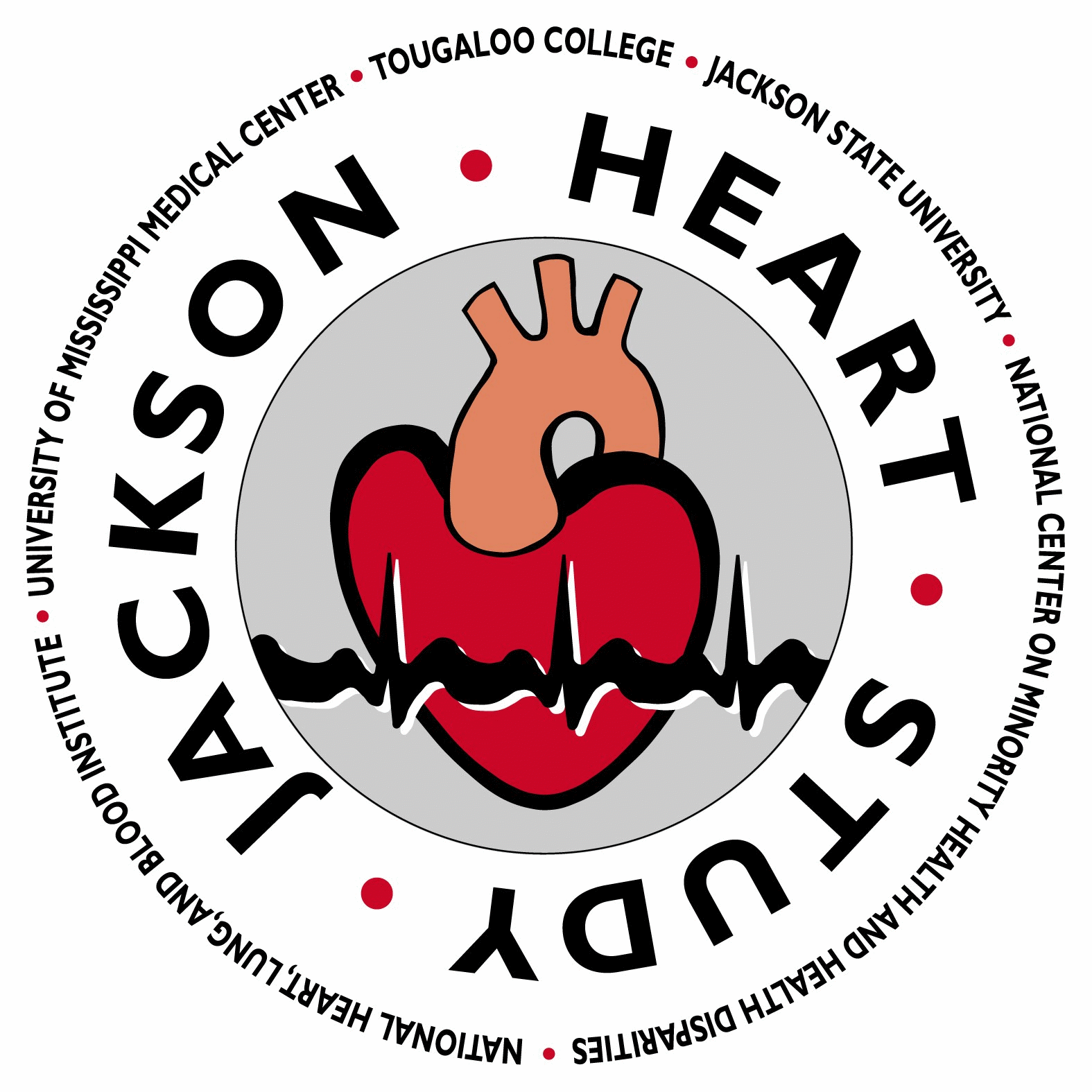9 survey
The Jackson Heart Study: Annual Follow-up with Third Party Respondents (NHLBI)
Attach 20 -Hospital Failure Hospital Record Abstraction (HFA) Form
The Jackson Heart Study: Annual Follow-up with Third Party Respondents
OMB: 0925-0491
Heart
Failure Hospital Record Abstraction Form
OMB# 0925-0491
EXPIRATION DATE
XX/XXXX

FORM CODE: : H F A
Version A.: 02-16-2007


ID NUMBER: CONTACT YEAR NUMBER:

FORM SEQUENCE NUMBER:


LAST NAME: INITIALS:
General
Instructions: The
Heart Failure hospital Record Abstraction Form is completed for
heart failure-eligible Community Surveillance hospitalizations. See
Surveillance Procedure manual for sampling rules. It should also be
completed for all heart failure-eligible cohort hospitalizations.
Refer to this form’s question by question instructions for
detailed information on each data item.

 0.
a.
Hospital code number:
0.
a.
Hospital code number:
0. b. Medical Record Number:

0. c. Date of discharge (for nonfatal case) or death:

Month Day Year
0. d. What was the disposition of the patient on discharge?
Deceased ………D
Alive …………….A
0. e. Was an autopsy performed?
Yes………Y
No……….N
0. f. Was the patient either dead on arrival or did he/she die in the emergency room?
Yes………Y
No……….N
SECTION I. SCREENING FOR DECOMPENSATION OR NEW ONSET

1. Was there evidence of the following conditions? Yes No/Not Recorded
 a.
Increasing or new onset shortness of breath
a.
Increasing or new onset shortness of breath
 b.
Increasing or new onset edema
b.
Increasing or new onset edema
 c.
Increasing or new onset paroxysmal nocturnal dyspnea
c.
Increasing or new onset paroxysmal nocturnal dyspnea
 d.
Increasing or new onset orthopnea
d.
Increasing or new onset orthopnea
 e.
Increasing or new onset hypoxia
e.
Increasing or new onset hypoxia
2 .
Was there evidence in the doctor's notes that the reason for this
.
Was there evidence in the doctor's notes that the reason for this
 hospitalization
was heart failure?
hospitalization
was heart failure?
3. Is this a cohort participant?
If
any response to items 1-3 is YES, go to item 4. If all are NO or not
recorded, go to item 77.
Yes No/Not Recorded
4. Did the patient have new onset or progressive symptoms/signs of
heart failure:

 a.
At
the time of admission to the hospital?
a.
At
the time of admission to the hospital?

 b. During this hospitalization?
b. During this hospitalization?
5

 .
Date of new onset or progression of symptoms/signs known
(mm-dd-yyyy):
.
Date of new onset or progression of symptoms/signs known
(mm-dd-yyyy):
 a.
If exact date unknown, estimate weeks prior to this hospitalization:
a.
If exact date unknown, estimate weeks prior to this hospitalization:

6. Did the physician’s note or discharge summary indicate any of the following specific types of
heart failure? (check all that apply)
Yes No/ Not Recorded
a .
Ischemic cardiomyopathy
.
Ischemic cardiomyopathy
b .
Idiopathic/dilated cardiomyopathy
.
Idiopathic/dilated cardiomyopathy
c .
Hypertensive heart failure
.
Hypertensive heart failure
d .
Hypertrophic cardiomyopathy
.
Hypertrophic cardiomyopathy
e .
Restrictive cardiomyopathy
.
Restrictive cardiomyopathy
f .
Infiltrative cardiomyopathy
.
Infiltrative cardiomyopathy
g .
Cor pulmonale
.
Cor pulmonale
D
 iastolic
heart failure
iastolic
heart failure


 i.
Valvular cardiomyopathy
i.
Valvular cardiomyopathy
 j.
Other cardiomyopathy/systolic
heart failure If No/Not Recorded, go to item 7.
j.
Other cardiomyopathy/systolic
heart failure If No/Not Recorded, go to item 7.
j.1. If other cardiomyopathy, specify _____________________________________________________
SECTION II: HISTORY OF HEART FAILURE

7. Prior to this hospitalization was there a history of any of the following:
Yes No/Not Recorded Unsure



a. Diagnosis of heart failure



b. Prior hospitalization for heart failure



c. Treatment for heart failure
8
 .
Was cardiac imaging performed prior to this hospitalization?
Yes No/Unk
.
Was cardiac imaging performed prior to this hospitalization?
Yes No/Unk

Go
to item 9.
8. a. Lowest Ejection Fraction recorded: %
8. a.1. Qualitative description:
Normal………………………….. N
Decreased mildly………………. D
Decreased moderately…………M
Decreased severely…………… S
None of the above………………O

8. b. Year of lowest ejection fraction (yyyy) :
8.c. Type of imaging:
 1.
MUGA
1.
MUGA
 2.
ECHO
2.
ECHO
 3.
Cath/LV gram
3.
Cath/LV gram
 4.
CT
4.
CT
 5.
MRI
5.
MRI
6. Other
 7.
Unknown
7.
Unknown
SECTION Ill: MEDICAL HISTORY AND PRECIPITATING FACTORS

9.
General
 History
of?
History
of?
Yes
No/NR
a. AIDS/HIV
 Excess
alcohol use
Excess
alcohol use
 Illicit
drug use
Illicit
drug use
A
 nemia
nemia
C
 ancer
(excluding skin cancer)
ancer
(excluding skin cancer)
C
 onnective
tissue disease
onnective
tissue disease
E
 x-smoker
x-smoker
C
 urrent
smoker
urrent
smokerT
 hyroid
disease
hyroid
disease
Respiratory

a .
Asthma G
.
Asthma G
C
 hronic
bronchitis/COPD G
hronic
bronchitis/COPD GO
 ther
chronic lung disease
ther
chronic lung disease
P
 ulmonary
embolus
ulmonary
embolus
C
 oughing,
phlegm, wheezing G
oughing,
phlegm, wheezing G
Sleep apnea
11. Cardiovascular

a. Angina G
Arrhythmia
1
 )
Atrial fibrillation/atrial flutter
)
Atrial fibrillation/atrial flutter
 2) Heart block or other bradycardia
2) Heart block or other bradycardia
3) Ventricular fibrillation or tachycardia
SECTION Ill: MEDICAL HISTORY AND PRECIPITATING FACTORS (continued)

11. Cardiovascular (continued)
History
of?
Yes
No/NR
 c.
Infectious/bacterial endocarditis
c.
Infectious/bacterial endocarditis
d. cardiac arrest
Cardiac procedures
C
 ABG
ABG
PCI
V
 alve
surgery
alve
surgery P
 acemaker
acemaker
Defibrillator
f
If
Yes, go to item 11.i. .
Congenital heart disease
.
Congenital heart disease
g
 .
Coronary heart disease (within year) G
.
Coronary heart disease (within year) G
h. Coronary heart disease (ever) G
i .
Electrocardioversion/defibrillation
.
Electrocardioversion/defibrillation
j. Hypertension
k .
Myocardial infarction
.
Myocardial infarction
l. Pulmonary hypertension
m .
Peripheral vascular disease
.
Peripheral vascular disease
n. Rheumatic heart disease
o .
Valvular heart disease
.
Valvular heart disease
12. Gastrointestinal / Endocrine
a .
Diabetes
.
Diabetes
b. Hyperlipidemia
c .
Liver disease
.
Liver disease
13. Renal
a .
Dialysis
.
Dialysis
SECTION Ill: MEDICAL HISTORY AND PRECIPITATING FACTORS (continued)
1 4.
Neurology
4.
Neurology
History
of?
Yes
No/NR
a
 .
Stroke/TIA
.
Stroke/TIA
b
 .
Depression
.
Depression
15. Other significant medical condition: _______________________________________
16. Were any of the following medical problems listed as precipitating factors (i.e. precipitated the onset of
this event)?
Yes No/NR
a .
Postpartum state
.
Postpartum state
b .
Excess alcohol intake
.
Excess alcohol intake
c .
Excess fluid intake/administration
.
Excess fluid intake/administration
d. Noncompliance with diet
e .
Noncompliance with medication
.
Noncompliance with medication
f. Infection
g .
Pneumonia
.
Pneumonia
h. Infectious/ bacterial endocarditis
i .
Pulmonary embolus
.
Pulmonary embolus
j. Angina
k .
Atrial fibrillation/flutter
.
Atrial fibrillation/flutter
l .
Heart block
.
Heart block
m. Ventricular fibrillation/flutter
n .
Cardiac arrest
.
Cardiac arrest
o. Myocardial infarction
p .
Valvular heart disease
.
Valvular heart disease
q. Stroke/TIA
SECTION lV: PHYSICAL EXAM – VITAL SIGNS

At hospital admission At hospital discharge
(or at onset of event) (or last recorded)






17. Blood pressure: a. / b. mmHg c. / d.
1 8.
Heart rate: B,
F, N
a. bpm
8.
Heart rate: B,
F, N
a. bpm

1 9.
Height: a. a.1. cm/ in (c=cm, i=in)
9.
Height: a. a.1. cm/ in (c=cm, i=in)



2

 0.
Weight: F
a. .
a.1. lbs/ kg b. . . b.1. lbs\ kg
0.
Weight: F
a. .
a.1. lbs/ kg b. . . b.1. lbs\ kg

 (l=lbs,
k=kg) (l=lbs, k=kg)
(l=lbs,
k=kg) (l=lbs, k=kg)
21. Respiration rate a. /min b. /min
SECTION V: PHYSICAL EXAM AND SYMPTOMS - FINDINGS
2 2.
Did the patient have any of the following GENERAL
signs or symptoms?
2.
Did the patient have any of the following GENERAL
signs or symptoms?
Anytime during hospitalization At hospital discharge
or at admission
Yes No/NR Yes No/NR
L



 ower
extremity edema G,
F, N a.1.
ower
extremity edema G,
F, N a.1.


b
 .
Jugular venous distension (JVD)
B, F, N b.1.
.
Jugular venous distension (JVD)
B, F, N b.1.
c
 .
Hepatojugular reflux F
.
Hepatojugular reflux F
d
 .
Hepatomegaly
F, N, B
.
Hepatomegaly
F, N, B


e. Leg fatigue on walking B
23. Did the patient have any of the following RESPIRATORY signs or symptoms?
Anytime during hospitalization At hospital discharge
or at admission
Yes No/NR Yes No/NR
C

 ough
F a.1.
ough
F a.1.
If
Yes, go to item 23g.
D


 yspnea
(Rest)
B b.1.
yspnea
(Rest)
B b.1.
D

 yspnea
(Walking)
B, F, N
c.1.
yspnea
(Walking)
B, F, N
c.1.

D
 yspnea
(Climbing or exertion) B,
F, N
d.1.
yspnea
(Climbing or exertion) B,
F, N
d.1.

S
 tops
for breath when walking
N e.1.
tops
for breath when walking
N e.1.

Stops for breath after 100 yards N
R
 honchi
G
honchi
G
P

 aroxysmal
nocturnal dyspnea
B,F,G h.1.
aroxysmal
nocturnal dyspnea
B,F,G h.1.
i
 .
Orthopnea
B i.1.
.
Orthopnea
B i.1.
j
 .
Pulmonary basilar rales
B, G, F, N
j.1.
.
Pulmonary basilar rales
B, G, F, N
j.1.

k .
Rales (more than basilar)
B, G, F, N
k.1.
.
Rales (more than basilar)
B, G, F, N
k.1.
l
 .
Wheezing
B l.1
.
Wheezing
B l.1

m. Vital capacity (decreased 1/3) F
SECTION V: PHYSICAL EXAM AND SYMPTOMS - FINDINGS (continued)
2 4.
Did the patient have any of the following CARDIOVASCULAR
signs or symptoms?
4.
Did the patient have any of the following CARDIOVASCULAR
signs or symptoms?
Anytime during hospitalization At hospital discharge
Yes No/NR Yes No/NR


S3 (gallop) B, F a.1.
S

 4
(gallop)
b.1.
4
(gallop)
b.1.
C

 hest
Pain
G
c.1.
hest
Pain
G
c.1.
N




 YHA
class: I II III IV not
recorded
YHA
class: I II III IV not
recorded
SECTION VI: DIAGNOSTIC TESTS
2
Go
to item 27.


 5.
Was an electrocardiogram performed during this hospitalization?:
Yes No/NR
5.
Was an electrocardiogram performed during this hospitalization?:
Yes No/NR
26. Did the patient have any of the following ECG abnormalities at any time during this hospitalization?
Yes No/Unknown

a. MI (age undetermined)
 b.
Ischemic changes or ST-T changes
b.
Ischemic changes or ST-T changes



 c.
Atrial fibrillation / atrial flutter G
c.1.
On telemetry? Yes No
c.
Atrial fibrillation / atrial flutter G
c.1.
On telemetry? Yes No
 d.
Left ventricular hypertrophy
d.
Left ventricular hypertrophy
 e.
Left bundle branch block
e.
Left bundle branch block



 f.
Ventricular tachycardia
f.1. On telemetry? Yes No
f.
Ventricular tachycardia
f.1. On telemetry? Yes No
Go
to item 29.


 27.
Was a chest X-ray performed during this hospitalization?: Yes
No/NR
27.
Was a chest X-ray performed during this hospitalization?: Yes
No/NR
28. Did the patient have any of the following signs on chest X-ray at any time during this hospitalization?
Yes No/Unknown
 a.
Alveolar infiltrates
a.
Alveolar infiltrates
 b.
Alveolar/pulmonary edema
B, F, N
b.
Alveolar/pulmonary edema
B, F, N
 c.
Interstitial pulmonary edema
B, F, N
c.
Interstitial pulmonary edema
B, F, N
 d.
Cardiomegaly
B, F
d.
Cardiomegaly
B, F
 e.
Cephalization/upper zone redistribution
B, N
e.
Cephalization/upper zone redistribution
B, N
 f.
Congestive heart failure
f.
Congestive heart failure
 g.
Bilateral pleural effusion
B,
F,
N
g.
Bilateral pleural effusion
B,
F,
N
 h.
Unilateral pleural effusion F,
N
h.
Unilateral pleural effusion F,
N
i .
Pulmonary vascular congestion
.
Pulmonary vascular congestion
j .
Kerley B lines
.
Kerley B lines
 k.
Cardiothoracic ratio ≥ 0.5
B
k.
Cardiothoracic ratio ≥ 0.5
B
SECTION VI: DIAGNOSTIC TESTS (continued)

2
Go
to item 30 29.


First transthoracic echocardiogram performed after onset or progression of heart failure.

a. Date (mm-dd-yyyy):
 b.
Ejection fraction: %
b.
Ejection fraction: %



c. Wall thickness: septal: . c.1. units (1=cm, 2=mm)



c.2. posterior: c.3. units (1=cm, 2=mm)
d. Record the following if present on transthoracic echocardiogram:
Mild Moderate Severe None Present NR


 1.
Left ventricular hypertrophy (LVH)
1.
Left ventricular hypertrophy (LVH)


 2.
Impaired LV systolic function
2.
Impaired LV systolic function


 3.
Impaired RV systolic function
3.
Impaired RV systolic function


 4.
Aortic regurgitation
4.
Aortic regurgitation


 5.
Aortic stenosis
5.
Aortic stenosis


 6.
Tricuspid regurgitation
6.
Tricuspid regurgitation


 7.
Mitral regurgitation
7.
Mitral regurgitation
M


 itral
stenosis
itral
stenosis


 9.
Estimated RVSP/PASP: mmHg
a. TR jet velocity: . m/s
9.
Estimated RVSP/PASP: mmHg
a. TR jet velocity: . m/s



10. Pulmonary hypertension
Yes No/Unknown/NR
1
 1.
Regional wall motion abnormality
1.
Regional wall motion abnormality
12. Dilated left ventricle
1
 3.
Dilated right ventricle
3.
Dilated right ventricle


14. Diastolic dysfunction
SECTION VI: DIAGNOSTIC TESTS (continued)



3 0.
Was a transesophageal echocardiogram performed? Yes
No/NR
0.
Was a transesophageal echocardiogram performed? Yes
No/NR
Go
to item 31.
First transesophageal echocardiogram performed after onset or progression of event.

a. Date (mm-dd-yyyy):
 b.
Ejection fraction: %
b.
Ejection fraction: %
c. Record the following if present on transesophageal echocardiogram:
Mild Moderate Severe None Present NR



 1.
Impaired LV systolic function
1.
Impaired LV systolic function

 2.
Impaired RV systolic function
2.
Impaired RV systolic function
Yes No/Unknown/NR


3. Regional wall motion abnormality

 4.
Dilated left ventricle
4.
Dilated left ventricle

 5.
Dilated right ventricle
5.
Dilated right ventricle
SECTION VI: DIAGNOSTIC TESTS (continued)

3
Go
to item 32.

 1
Was a right cardiac catheterization performed? Yes
No/NR
1
Was a right cardiac catheterization performed? Yes
No/NR

a. Date (mm-dd-yyyy) :
b. Record the following measurements from the catheterization report::
 1.
Right atrial pressure (mean): mmHg
1.
Right atrial pressure (mean): mmHg

 2.
Pulmonary arterial pressure: / mmHg
2.
Pulmonary arterial pressure: / mmHg
3 .
Pulmonary wedge pressure: mmHg
.
Pulmonary wedge pressure: mmHg

 4.
Cardiac output: .
liters/min
4.
Cardiac output: .
liters/min

 5.
Cardiac index:
.
liters/min/m2
BSA
5.
Cardiac index:
.
liters/min/m2
BSA
3
Go
to item 33.


 2
Was coronary angiography performed? Yes No/NR
2
Was coronary angiography performed? Yes No/NR
a. Date (mm-dd-yyyy) :
Record the following:
1 .
Ejection fraction: %
.
Ejection fraction: %
2. Coronary stenosis:
0 1-24 25-49 50-74 75-94 95-99 100 NR
% % % % % % %
 a.
Left main:
a.
Left main:
 b.
Left anterior descending artery and branches:
b.
Left anterior descending artery and branches:
 c.
Left circumflex/marginal artery:
c.
Left circumflex/marginal artery:
 d.
Right coronary artery and branches:
d.
Right coronary artery and branches:

e. Intermediate ramus:
Go
to item 32.b.4.
3

 .
Were coronary bypass grafts present? Yes No/NR
.
Were coronary bypass grafts present? Yes No/NR
 a.
Number of occluded grafts:
a.
Number of occluded grafts:




 4.
Mitral regurgitation: mild moderate severe none
present NR
4.
Mitral regurgitation: mild moderate severe none
present NR
SECTION VI: DIAGNOSTIC TESTS (continued)

3
Go
to item 34.

 3.
Was a cardiac radionuclide ventriculogram performed? Yes
No/NR
3.
Was a cardiac radionuclide ventriculogram performed? Yes
No/NR



 a.
Date: b.
Ejection fraction: LV: % c. RV: %
a.
Date: b.
Ejection fraction: LV: % c. RV: %
mm-dd-yyyy)
3
Go
to item 35.

 4.
Was a cardiac Magnetic Resonance Imaging (MRI) performed? Yes
No/NR
4.
Was a cardiac Magnetic Resonance Imaging (MRI) performed? Yes
No/NR



 a.
Date: b.
Ejection fraction: LV: % c. RV: %
a.
Date: b.
Ejection fraction: LV: % c. RV: %
(mm-dd-yyyy)
3
 5.
Was a cardiac CT scan performed? Yes
No/NR
5.
Was a cardiac CT scan performed? Yes
No/NR



 a.
Date: b.
Ejection fraction: LV: % c. RV:
%
a.
Date: b.
Ejection fraction: LV: % c. RV:
%
(mm-dd-yyyy)
3 6.
Was a stress test performed? Yes
No/NR
6.
Was a stress test performed? Yes
No/NR
a. Date:
b. Normal Abnormal Equivocal Not diagnostic
c. Ejection fraction: LV: %
SECTION VII: BIOCHEMICAL ANALYSES

a. Worst* b. Last c. Upper Limit Normal
3

 7.
Hemoglobin (g/dL)
7.
Hemoglobin (g/dL)
3

 8.
Hematocrit (%) .
8.
Hematocrit (%) .



 39.
BNP (pg/mL)
39.
BNP (pg/mL)
40. ProBNP (pg/mL)



 41.
Troponin T (ng/mL) .
.
.
41.
Troponin T (ng/mL) .
.
.





 42.
Troponin I (ng/mL) .
.
.
42.
Troponin I (ng/mL) .
.
.

 43.
Sodium (mEq/L)
43.
Sodium (mEq/L)

 44.
Serum creatinine (mg/dL) .
.
44.
Serum creatinine (mg/dL) .
.

 45.
BUN (mg/dL)
45.
BUN (mg/dL)
Worst = highest value with exception of hemoglobin, hematocrit, and sodium. For these items
worst is the lowest value (L )
SECTION Vlll: INTERVENTIONS

Yes No/Unknown/NR

4 6.
Cardiac (electrophysiologic) ablation therapy
6.
Cardiac (electrophysiologic) ablation therapy
 47.
Implantable cardiac defibrillator
47.
Implantable cardiac defibrillator
48. Cardioversion

 49.
Pacemaker placement (non-biventricular)
49.
Pacemaker placement (non-biventricular)
 50.
Biventricular pacemaker (CRT)
50.
Biventricular pacemaker (CRT)
 51.
Coronary Artery Bypass Graft
51.
Coronary Artery Bypass Graft
5 2.
Percutaneous Coronary Intervention (PCI)/stent
2.
Percutaneous Coronary Intervention (PCI)/stent
5 3.
Valve replacement/repair
3.
Valve replacement/repair
5 4.
Intra
Aortic Balloon Pump (IABP)
4.
Intra
Aortic Balloon Pump (IABP)
5 5.
Hemofiltration/dialysis
5.
Hemofiltration/dialysis
5 6.
Listed/received transplant of heart
6.
Listed/received transplant of heart
57. Left ventricular assist device
5 8.
Was patient counseled regarding the following?
8.
Was patient counseled regarding the following?
Sodium/cholesterol reduction
T

 obacco
cessation N/A
obacco
cessation N/AFluid restriction
SECTION lX: MEDICATIONS
 Prior
to hospitalization or progression At hospital discharge
Prior
to hospitalization or progression At hospital discharge
in hospital
Yes No/NR Yes No/NR
5
 9.
ACE inhibitors
a.
9.
ACE inhibitors
a.
6
 0.
Angiotensin II receptor blockers
a.
0.
Angiotensin II receptor blockers
a.
61. Antiarrhythmics

 a.
Amiodarone
a. 1.
a.
Amiodarone
a. 1.

 b.
Other
b. 1
b.
Other
b. 1
6
 2.
Anticoagulants
a.
2.
Anticoagulants
a.
6
 3.
Anti-inflammatory
a.
3.
Anti-inflammatory
a.
64. Antiplatelets
a

 .
Aspirin
a.1.
.
Aspirin
a.1.
b
 .
Other b.1.
.
Other b.1.
6
 5.
Beta blockers a.
5.
Beta blockers a.
6
 6.
Calcium channel blockers a.
6.
Calcium channel blockers a.
6 7.
Digitalis
G a.
7.
Digitalis
G a.
6
 8.
Diuretics G
a.
8.
Diuretics G
a.
6
 9.
Aldosterone Blocker a.
9.
Aldosterone Blocker a.
70. Lipid lowering agents
a
 .
Statins
a.1.
.
Statins
a.1.
b
 .
Other
b.1.
.
Other
b.1.
7
 1.
Nitrates a.
1.
Nitrates a.
7
 2.
Hydralazine
a.
2.
Hydralazine
a.
S ECTION
lX: MEDICATIONS (continued)
ECTION
lX: MEDICATIONS (continued)
73. IV drugs during this hospitalization?
a


 . IV
inotropes: Yes No/NR
. IV
inotropes: Yes No/NR
b .
IV diuretics: Yes No/NR
.
IV diuretics: Yes No/NR
c
 . IV
vasodilators: Yes No/NR
. IV
vasodilators: Yes No/NR
d .
IV antiarrythmics: Yes No/NR
.
IV antiarrythmics: Yes No/NR
 SECTION
X: COMPLICATIONS FOLLOWING EVENT
SECTION
X: COMPLICATIONS FOLLOWING EVENT
Yes No/Unknown
7 4.
Cardiac arrest
4.
Cardiac arrest
7 5.
Stroke
5.
Stroke
7 6.
Myocardial infarction
6.
Myocardial infarction
 SECTION
XI: ADMINISTRATIVE
SECTION
XI: ADMINISTRATIVE
 77.
Time taken to abstract (mins):
77.
Time taken to abstract (mins):

 78.
Abstractor number:
78.
Abstractor number:
79. Date abstract completed (mm-dd-yyyy):
| File Type | application/msword |
| File Title | ARIC HOSPITAL ABSTRACTION FORM |
| Author | CSCC |
| Last Modified By | pandeym |
| File Modified | 2009-12-15 |
| File Created | 2009-11-10 |
© 2025 OMB.report | Privacy Policy
